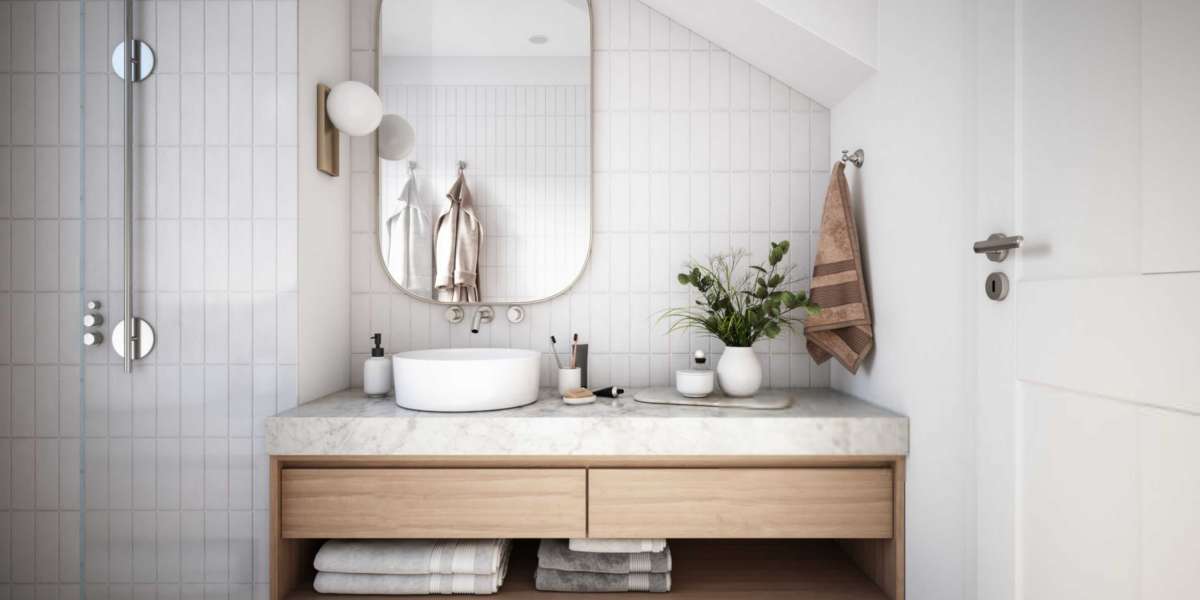The simplest and fastest way to hang a mirror is by using special mounting hardware, but not always is such mirror-mounting equipment readily available. Here, we’ll guide you on how to quickly and evenly secure a mirror on walls made of various materials.
Features of Mounting Different Types of Mirrors
There are several ways to mount a mirror, but the choice depends on various factors—such as the shape and weight of the mirror, the type of surface it's being mounted on, the room's interior, and other nuances. With the right knowledge and adherence to professional recommendations, you don’t always need help from a specialist. By understanding the intricacies of the process and using the necessary tools, you can hang a mirror on any surface by yourself—quickly and efficiently.

Mounting a Framed Mirror
A framed mirror is relatively easy to mount since the frame usually comes with specific hardware. If mounting hardware is not included, you can secure the mirror using, for example, metal loops, which can be attached to the frame. Screws are then inserted into the wall, and the mirror is hung on them.
For heavier and bulkier frames, you can use this method:
- Prepare two wooden rails (slightly shorter and narrower than the mirror frame’s base) with a cross-section of 50x20 mm, a tape measure, saw, screws, and a drill.
- Cut both rails at a 45-degree angle along their length.
- Attach the first rail to the top part of the frame with the cut side facing downward at about one-fifth of the mirror's height. Attach the second rail to the wall with the cut side facing upward.
- Hang the mirror by aligning the rails, creating a tight "lock."
Ensure the rails are exactly 50x20 mm, as thinner ones might not support the mirror’s weight. For additional security, apply a few drops of liquid nails to each rail before connecting them—unless you plan to remove the mirror regularly.
Mounting Without a Frame
Attaching a frameless mirror to the wall can be done without drilling, but first, the surface must be prepared. If the wall is wooden, sand it down to remove rough edges. Concrete should be cleaned of dust, and large cracks should be filled with putty. If there’s wallpaper, it’s better to screw in wooden, metal, or plastic strips before mounting, as wallpaper alone won't support the weight. Once the surface is cleaned, degrease it with alcohol or white spirit.
Mounting with Glue or Sealant
It’s recommended to use special mirror adhesive, but if unavailable, quality mounting glue can provide a durable hold. Alternatively, neutral sealant can also be used. Apply the adhesive or sealant to the back of the mirror in vertical strips, zigzag lines, or large dots, ensuring to leave a gap from the edges to avoid spilling over. After applying the adhesive, press the mirror firmly against the wall for 5-7 minutes, then let it sit until the material sets. The advantage of neutral sealants is their strong hold, while still allowing for easy removal later.
To ensure safety when working on vertical surfaces, apply double-sided mounting tape in 4-6 spots between the sealant points or at the corners. This will prevent the mirror from falling while ensuring secure fixation.
Mounting with Double-Sided Tape
This method works well for small mirror pieces on tile or plastic panels. First, clean and dry the surface. Mark the mounting position on the wall, then apply pieces of double-sided tape to the back of the mirror, spaced about 10 cm apart. Press the mirror firmly onto the wall in several spots to secure it.
Note that this method is only suitable for rooms with low humidity and temperatures between +10 and +25°C. If conditions exceed these limits, consider a different mounting method.

Mounting Mirrors on Different Wall Materials
Each material has unique properties, so it’s important to choose the right mounting technique based on the surface. Consider both the type of mounting and the mirror's weight, as some materials cannot support heavy mirrors, even with anchors or screws.
Concrete: Concrete walls are strong enough to support large, heavy mirrors, but you'll need a power drill to make the necessary holes. If you don’t have one, you can use adhesive for mounting instead, but ensure the wall is dust-free and primed before gluing.
PVC Panels: Often used in bathrooms, PVC panels don’t hold mirrors well with adhesive or tape. Mirrors should be mounted on the underlying frame of the panels, or securely attached using hooks or screws.
Tile or Ceramic: Use aquarium glue or drill holes with diamond-tipped bits to mount mirrors on smooth surfaces like tile. Regular drill bits can cause cracks or chips, so they should be avoided.
Drywall: For mounting mirrors on drywall, use special anchors or butterfly bolts. Gluing directly to drywall is not recommended, as the mirror could peel off along with the drywall surface.
Mounting a Mirror with Drilling
If other methods aren’t suitable, you can secure the mirror by drilling holes through the mirror itself. Glass is fragile and requires careful handling with special glass drill bits to avoid cracks or chips.
Additional Methods:
- Steel Plates: Steel plates offer a secure, aesthetic option for mounting larger mirrors.
- Clamps: These hardware pieces can be screwed to the wall to hold mirrors securely in place.
- Decorative Holders: Suitable for small mirrors, these combine mounting and aesthetic features.
Height Considerations
When mounting a mirror in a bathroom, place it at least 30 cm above the sink to prevent water splashes. In living rooms or bedrooms, 1.2-1.5 meters from the floor is ideal. Consider the height of the tallest family member, and mount the mirror 3-5 cm above their eye level.

Mirror Quality Tips
When choosing a mirror:
- Look for certifications indicating the materials used.
- Optimal thickness is 4-6 mm to avoid distortions.
- Check for quality glass grades like M1, M2, or M3.
A mirror is a reflection of the soul, so choose wisely and install it properly for long-lasting use and beauty.







